What did Noa see in the telescope in 'Kingdom of the Planet of the Apes?'
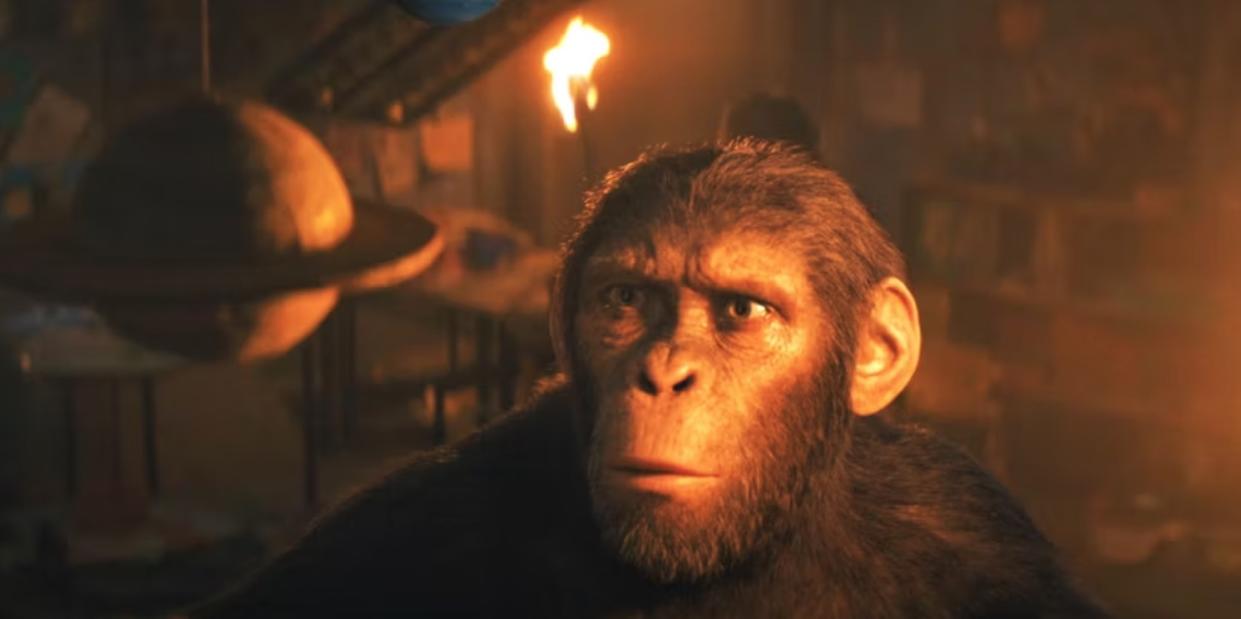
- Oops!Something went wrong.Please try again later.
Space travel and "The Planet of the Apes" have been linked since the franchise's launch in 1968, but the latest entry has us wondering if astronauts may return and asking a key question: Just what did the ape Noa see through the telescope at the iconic Griffith Observatory?
The telescope scenes are just some of the foreshadowing clues in director Wes Ball's new "Kingdom of the Planet of the Apes" that have online theorists, armchair screenwriters and sci-fi speculators going bananas over the prospect of the franchise launching back to the stars. They hint that the next installment of this fresh trilogy, which begins hundreds of years after the reign of Caesar, could indeed be destined for the heavens. Below are the places we gleaned insights to partially support that theory.
If you need to get caught up on the recent "Planet of the Apes" films, you can watch them all on Hulu, which is currently showing "Rise of the Planet of the Apes," "Dawn of the Planet of the Apes" and "War for the Planet of the Apes."
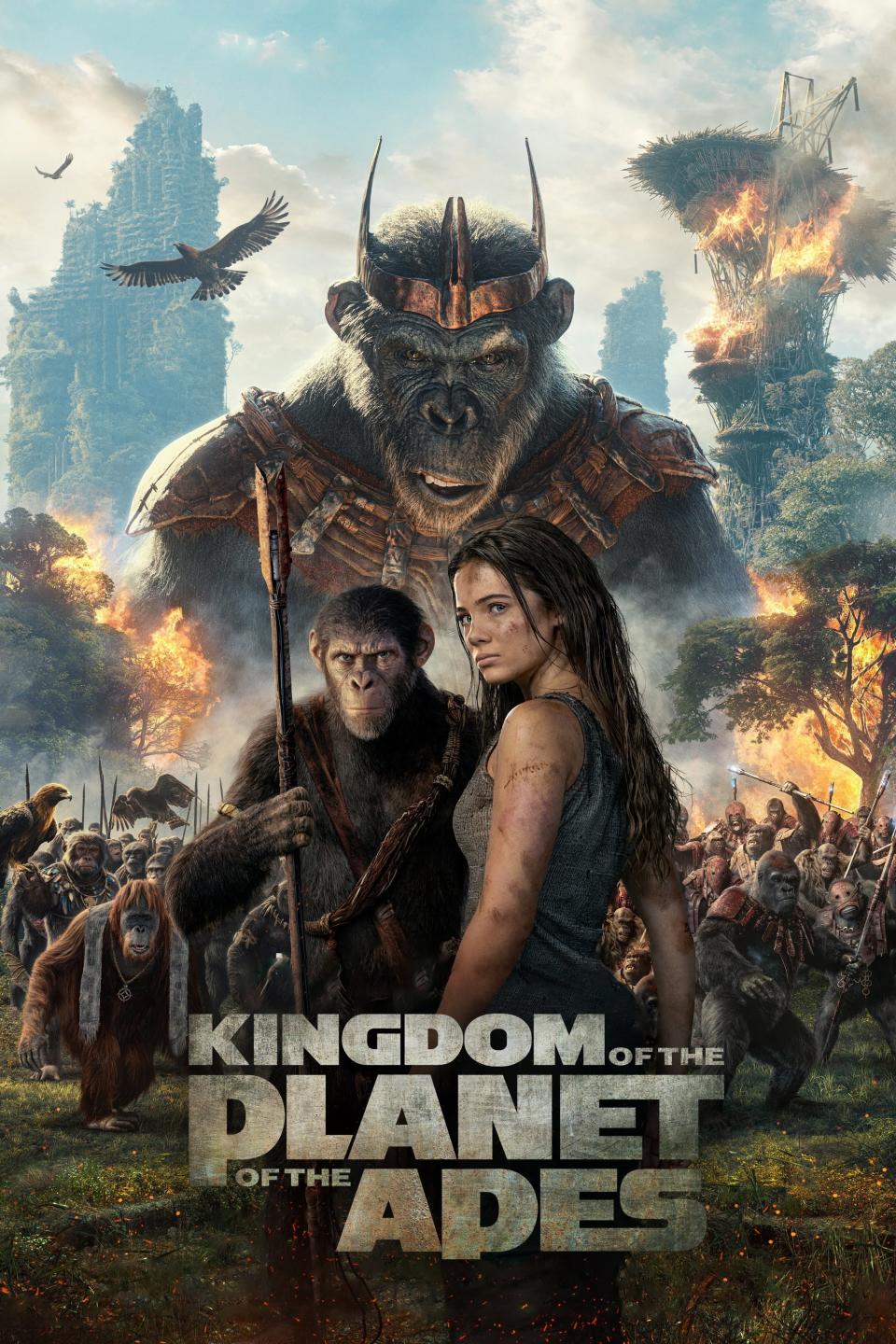
"Planet of the Apes" has always been rooted in space travel, even going back to the original source material, French author Pierre Boulle's 1963 novel, "La Planète des Singes." That book utilized a clever framing device of a honeymooning couple on a space pleasure cruise. They discover a "message in a bottle" containing the journal of an astronaut scientist named Ulysse Mérou who crash-lands on the planet Soror in the Betelgeuse star system circa the year 2500, where he and his colleagues encounter an upside-down world ruled by evolved intelligent simians.
Humans in this strange place are mute savages, and after Mérou resides with the apes and monkeys for a spell, he takes a primitive woman named Nova as a wife, has a child with her, then escapes back to Earth in his original spaceship. There he finds a very different planet, one lorded over by advanced civilized apes. The twist occurs when we return to the framing device of the just-married couple on an interstellar honeymoon to reveal that they are both chimpanzees.
Let's examine more clues and dissect several speculative rumblings in "Kingdom of the Planet of the Apes," starting with Noa and his plant-covered telescope, to see if these space-based, time-dilating theories hold water or are simply unfounded.
Related: Facts about Einstein's theory of special relativity
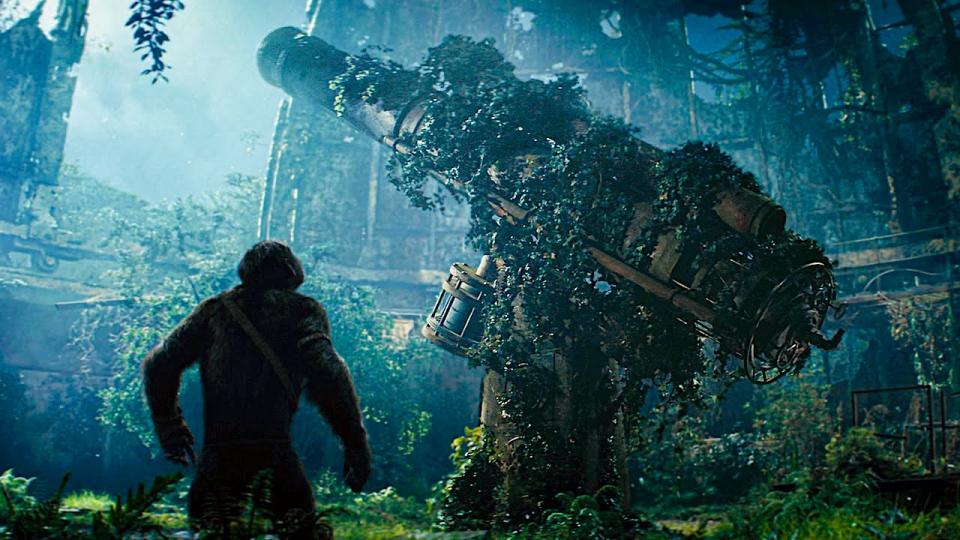
The 'tube that swallows light'
"Kingdom of the Planet of the Apes" ends with an unstable truce between Mae and Noa, and the movie closes with them both staring up at the sky. Director Wes Ball deliberately chose not to reveal what Mae, Soona, or Noa saw through the Griffith Observatory telescope at different points in the story, but it was certainly something that incited a sense of shock, awe and wonder.
Noa describes the telescope as a "tube that swallows" light, and upon a second visit to that decaying observatory and its optical equipment, his pupil glows with surprise. Or is Noa telling Raka that what he saw via the eyepiece was a "tube that swallows light," which could describe a wormhole or black hole through which a missing spaceship like the Icarus could emerge after being lost in space? It could be way too early in the timeline, but it's a provocative thought.
Mae is clearly astonished when she first looks into the eyepiece, and the fact that the final telescope scene is interwoven with humans activating their orbiting satellites to engage in communication and a flash to the astronaut wall art seems to be far more than a coincidence. Do they see a spaceship, a cosmic anomaly or the Bob's Big Boy rocket Dr. Evil escaped in from "Austin Powers: International Man of Mystery?"
Review: 'Kingdom of the Planet of the Apes' reinvigorates an aging 'Apes' franchise
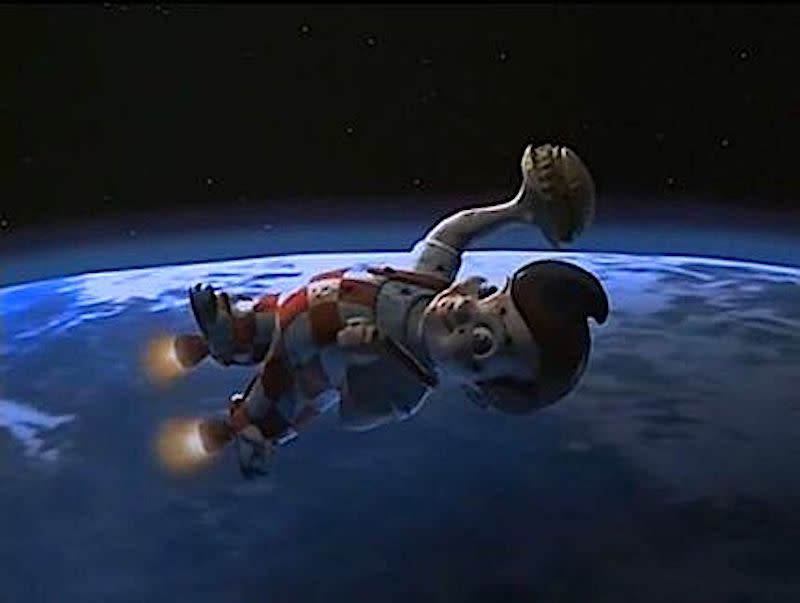
"Space is a key idea"
With such an abundance of teases surrounding space, telescopes and astronauts, together with Noa discovering the planetary mobile of our solar system in the classroom, it appears that we’re inching closer to the original 1968 film's spacey sci-fi territory. Remember that in "Rise of The Planet of the Apes" there's a background newscast and newspaper headline reporting on the Icarus Mars mission. Icarus was the nickname of the Liberty 1 spacecraft, commanded by Charlton Heston's George Taylor, in the first "Apes" film. Interesting? Let the wild speculation begin!
"I figured there is nothing I could show you that would be stronger than what the audience's imagination would conjure up," Ball told USA Today regarding what's seen in the telescope. "Sure, it might turn some people off, but some people will like it. I have ideas of what they're looking at... Right, they're looking at [SpaceX founder] Elon Musk flying around on his Falcon 9 rocket. But I'll just say this: Space obviously is a key idea in all of these movies. So, maybe it's them looking to the future?"
Fort Wayne, Indiana
When Mae brings the recovered SATCOM key to the human survivor bunker at the movie's end, the team uses it to trigger the rusting, decrepit radio-telescope array to reposition itself and connect to another human compound, which promptly announces, "This is Fort Wayne, Indiana."
This is a deep-cut nod to the original "Planet of the Apes" movie. In a key moment from the 1968 movie, Cornelius (Roddy McDowell) asks George Taylor where he learned to write. Taylor scribbles down "Jefferson Public School, Fort Wayne, Indiana," which Cornelius reads aloud.
Some theorists have deduced that a telescope array wouldn't be needed for Earth-based communication and instead speculate that they’re actually talking to someone in space! Is Fort Wayne the Hoosier State settlement we're familiar with today, or is it the name of a space-based settlement to which humans have retreated in the "Apes" universe?
Since the sequence in "Kingdom" is intercut with Noa and Soona staring into the telescope, with a repeated cutaway to the astronaut mural in that crumbling astronomy building, it's been strongly suggested that the voice off the satellite relay is coming from an off-Earth location. Perhaps the voice on the radio is actually George Taylor in space, and not really in Indiana! Could Fort Wayne be a code name for an orbiting space station?
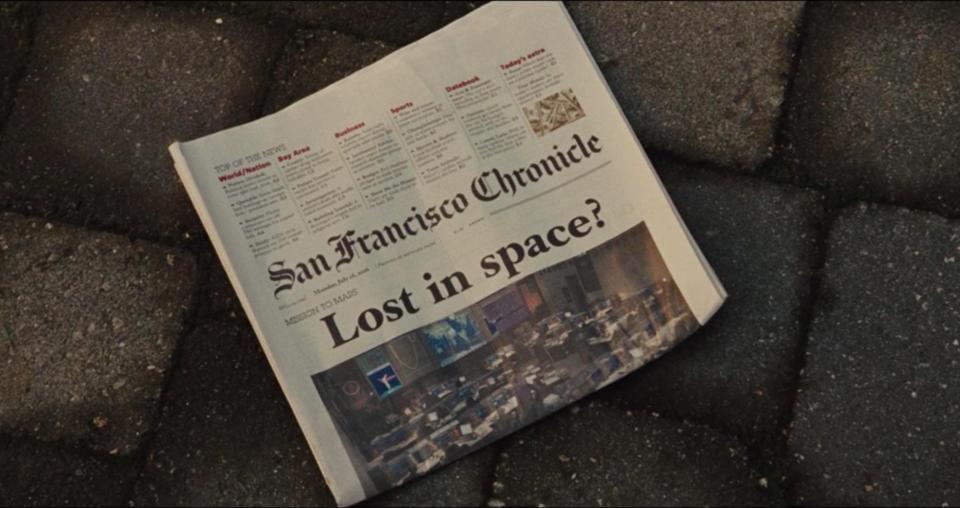
RELATED STORIES:
— Apes ponder their place in the universe in 'Kingdom of the Planet of the Apes' trailer (video)
— The space-age origins of 'Planet of the Apes'
— Best sci-fi books: modern masterpieces & all-time classics
One far-out fantasy says that we're not actually on Earth, but that seems a bit nuts.
As Wes Ball confidently steers this new "Apes" trilogy into the future, it's a natural step for the narrative to circle back to the franchise's old cosmic pedigree and eventually catch up to the timeline introduced in 1968’s "Planet of the Apes." We might be wrong about these ruminations, but it's sure a fun playground to ponder!

